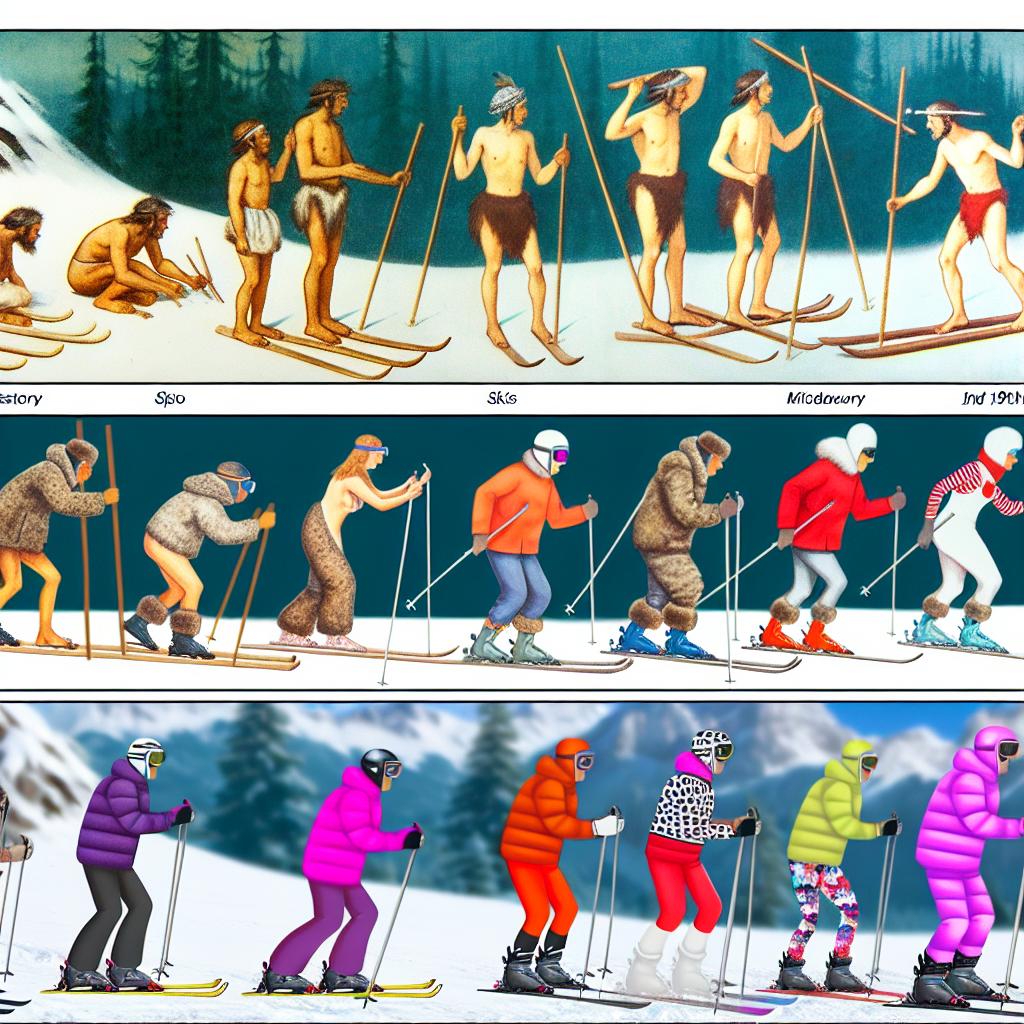Origins of Skiing
Skiing’s history can be traced back over several millennia with evidence suggesting its use for practical and utilitarian purposes long before it became a sport. Archaeological discoveries have uncovered that people in Scandinavia were using skis as early as 5000 BCE. These early skis were primarily crafted from wood and specifically used for essential activities such as hunting and traversing snow-laden landscapes. The existence of ancient rock carvings and artifacts from the Stone Age, found in diverse regions like China, Russia, and the extensively documented Scandinavia, support this idea. These findings highlight how skiing originally served as an essential mode of transportation in harsh winter conditions.
Development as a Sport
The transformation of skiing from a mode of transportation to a sport unfolded primarily during the 19th century. Norway is often honored as a pivotal contributor in this conversion process, revered as the birthplace of modern skiing. The influence of notable figures like Sondre Norheim significantly shaped skiing’s evolution. Norheim is often celebrated for his contributions to ski design and technique. His introduction of innovative methods such as the Telemark and Christiania turns marked the beginning of skiing as a sport. These aspects were instrumental in forming the framework for the competitive and recreational skiing activities we are familiar with today.
Establishment of Ski Clubs
The burgeoning popularity of skiing as a leisure activity by the mid-19th century led to the emergence of ski clubs. These clubs became instrumental in formalizing skiing as an organized sport. Norway once again assumes a central role, with the establishment of its first ski club, the Trysil Shooting and Skiing Club, founded in 1861. The establishment of such clubs didn’t remain confined to Norway. Other European nations such as Austria and Switzerland observed this trend and soon followed by forming their ski clubs. These clubs provided a platform for organizing ski races and played a crucial role in promoting the sport and cultivating a skiing culture that supported both competition and camaraderie.
Introduction of Competitive Events
The initiation of competitive skiing events was another critical aspect of skiing’s evolution during the second half of the 19th century. The first recorded skiing competition is believed to have occurred in 1843 in Tromsø, Norway. Despite this early initiation, it wasn’t until 1868, at the Holmenkollen Ski Festival in Oslo, that competitive skiing truly came into prominence. This festival featured events such as ski jumping and cross-country ski competitions, which helped capture the interest of the general public. These events gradually drew participants from across different regions and played a substantial role in popularizing skiing beyond the Scandinavian borders.
World Expansion
The global spread of skiing saw significant advancements with the arrival of the 20th century. One of the most crucial innovations during this period was the introduction and refinement of ski lifts in the 1930s. This development dramatically increased the accessibility and appeal of skiing, establishing ski resorts as attractive destinations for winter sports enthusiasts. The addition of ski lifts revolutionized alpine or downhill skiing by making it feasible for skiers to enjoy extended runs without the physical exertion required in climbing back up the slopes. Consequently, this innovation contributed to the growing popularity of skiing worldwide.
Olympic Inclusion
Skiing’s inclusion in the Winter Olympics provided another substantial boost to the sport’s international stature. The sport was first featured in the inaugural Winter Games held in 1924 in Chamonix, France. Initial events included cross-country skiing, ski jumping, and the Nordic combined. As the Olympics evolved, alpine skiing, freestyle skiing, and later, snowboarding events were also introduced. Each addition expanded skiing’s global appeal and provided various platforms for athletes to display their skills, further embedding skiing within the fabric of international sports culture.
Skiing Today
Today, skiing is a beloved activity enjoyed by millions worldwide. It is embraced both as a competitive sport and a recreational pastime. Nations known for their rich skiing culture, such as Austria, Switzerland, Italy, and the United States, continue to be prime attractions for ski enthusiasts. Modern innovations in ski equipment and technology have significantly contributed to making skiing more inclusive and safer for people with varying skill levels. This progress ensures that skiing remains accessible to a broader audience, allowing more individuals to experience the thrill of the sport.
For those interested in exploring the history of skiing in greater depth, numerous resources and organizations are dedicated to preserving skiing’s heritage and ongoing development. Institutions like the International Ski Federation and national skiing museums located in snow-rich countries offer comprehensive insights into skiing’s rich past. These resources delve into both the ancient roots and the transformative journey skiing has undergone, spotlighting its evolution into the contemporary sport cherished by many today.
While skiing’s origins were intimately tied to survival and transportation, its adaptation and rise as a globally loved winter sport exemplify human ingenuity and the cultural evolution that various activities can undergo. Skiing’s journey from a practical necessity to a sport of international acclaim highlights the sport’s ability to captivate people across the globe irrespective of its ancient roots.
